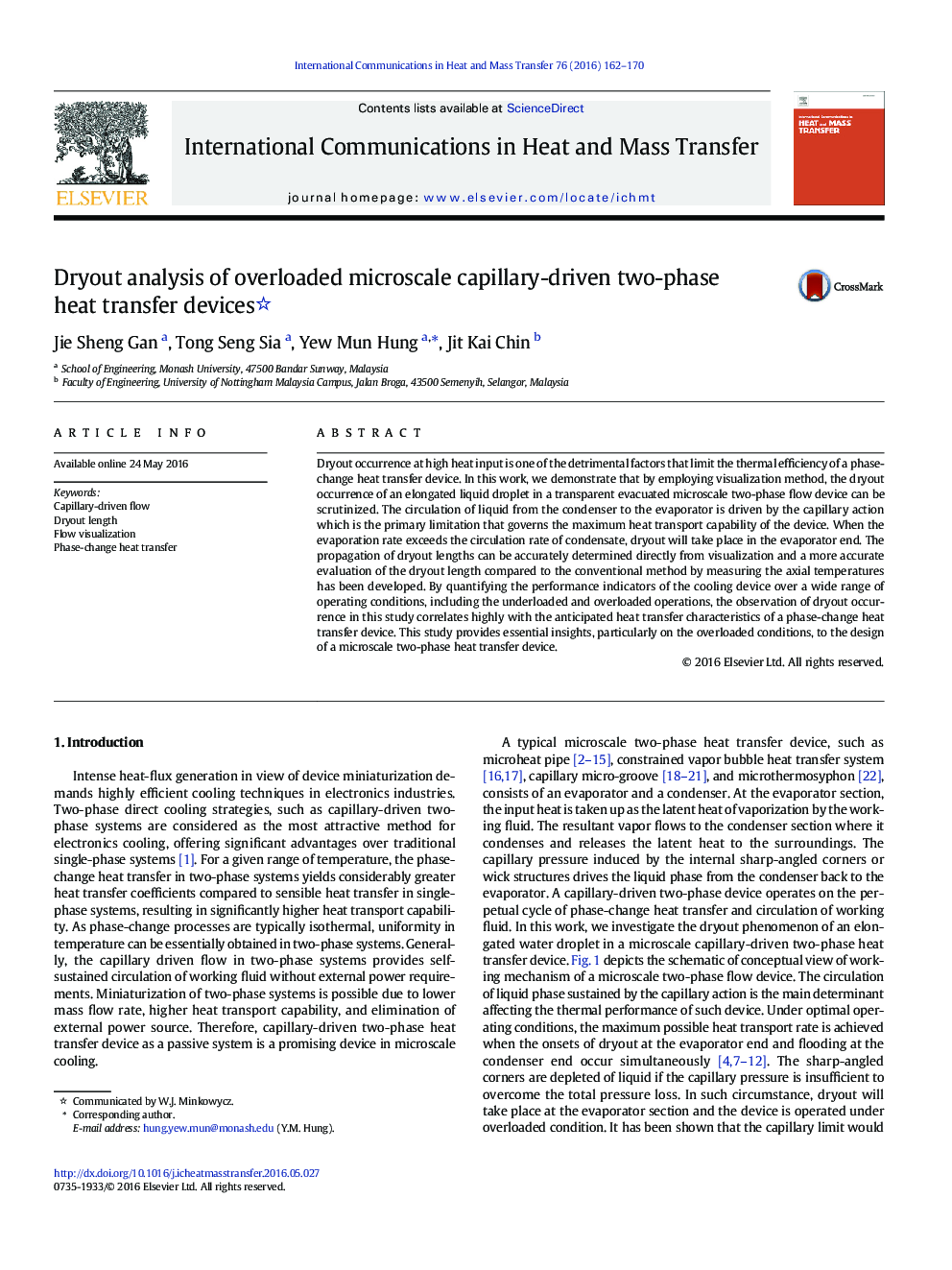| Article ID | Journal | Published Year | Pages | File Type |
|---|---|---|---|---|
| 652856 | International Communications in Heat and Mass Transfer | 2016 | 9 Pages |
Dryout occurrence at high heat input is one of the detrimental factors that limit the thermal efficiency of a phase-change heat transfer device. In this work, we demonstrate that by employing visualization method, the dryout occurrence of an elongated liquid droplet in a transparent evacuated microscale two-phase flow device can be scrutinized. The circulation of liquid from the condenser to the evaporator is driven by the capillary action which is the primary limitation that governs the maximum heat transport capability of the device. When the evaporation rate exceeds the circulation rate of condensate, dryout will take place in the evaporator end. The propagation of dryout lengths can be accurately determined directly from visualization and a more accurate evaluation of the dryout length compared to the conventional method by measuring the axial temperatures has been developed. By quantifying the performance indicators of the cooling device over a wide range of operating conditions, including the underloaded and overloaded operations, the observation of dryout occurrence in this study correlates highly with the anticipated heat transfer characteristics of a phase-change heat transfer device. This study provides essential insights, particularly on the overloaded conditions, to the design of a microscale two-phase heat transfer device.
